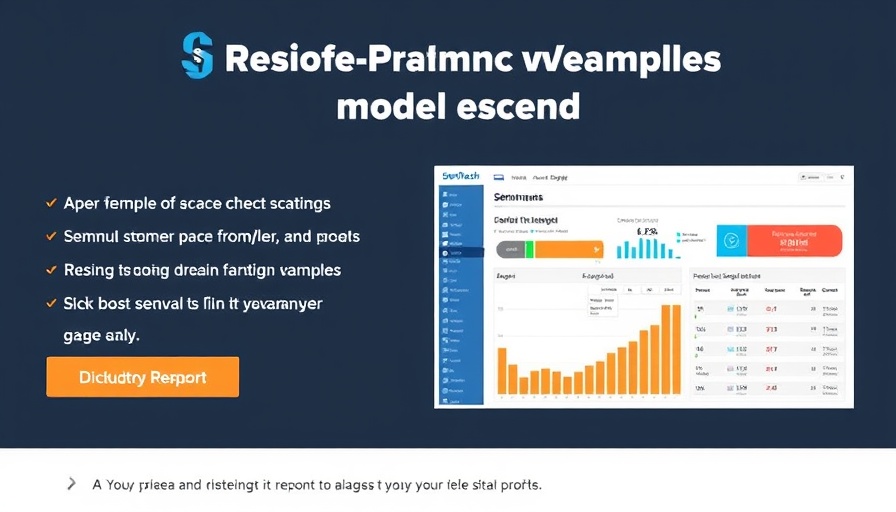
Understanding Search Engine Marketing: The Basics
Search Engine Marketing (SEM) is a powerful tool for small and medium-sized businesses (SMBs) looking to boost their online presence. At its core, SEM refers to the practice of using paid advertisements that appear on search engines like Google and Bing when specific keywords relevant to a business are searched. This method allows businesses to reach highly motivated prospects actively seeking their products or services, making it an effective form of digital advertising.
Essentially, SEM is about bidding on keywords related to your offerings, creating ads based on those keywords, and then paying a fee, typically influenced by the number of clicks received. This lets advertisers gain instantaneous visibility on search results, facilitating a direct connection with potential customers.
SEM vs. SEO: What’s the Difference?
While SEM and Search Engine Optimization (SEO) both aim to enhance a business's visibility on search engines, they function quite differently. SEM delivers results much faster, often within hours to days, whereas SEO is a long-term strategy that may take months or even years to yield significant results. Furthermore, SEM requires ongoing investment; once payments cease, ads disappear. In contrast, effective SEO strategies can continue to drive traffic long after the initial optimization efforts.
Here are the essential differences:
- Speed of results: SEM offers quick visibility, while SEO requires patience.
- Traffic durability: SEM stops once you stop funding it, whereas SEO benefits can last over time.
- Control level: SEM provides complete control over your campaign parameters, unlike the unpredictable nature of SEO rankings.
- Budget requirements: SEM necessitates ongoing spending, while SEO incurs a more upfront investment with sustained maintenance.
- Ideal use: Use SEM for urgent campaigns or product launches, and SEO for long-term brand-building efforts.
The Importance of a Balanced Approach
Many experts advocate for a balanced combination of both SEM and SEO. For small and medium-sized businesses, employing both strategies can yield greater returns. Using SEM can provide immediate traffic and visibility, essential during product launches or in competitive markets, while SEO builds a solid foundation for long-term growth and authority in your niche.
Making Informed Decisions in SEM
To effectively leverage SEM, businesses should begin by identifying relevant keywords. This involves researching terms and phrases that potential customers are likely to search for. Tools such as Google Keyword Planner can aid in discovering popular search queries related to your business, helping to structure your ad campaigns effectively.
Moreover, it’s vital to continuously monitor and optimize your SEM campaigns. Analyze your click-through rates (CTR), conversion rates, and overall return on investment (ROI) regularly to identify which keywords and ads perform best. This iterative process allows for ongoing improvement, making your efforts more effective over time.
Tools and Resources to Optimize Your SEM Strategy
Numerous tools can facilitate effective SEM practices. Beyond Google Ads, platforms like SEMrush and Ahrefs offer valuable insights into keyword rankings and competitor strategies, illuminating areas for improvement. Additionally, understanding analytics through Google Analytics can track how users interact with your site once they click your ads, providing a holistic view of your SEM effectiveness.
Future Trends in SEM
The landscape of search engine marketing is ever-evolving. As artificial intelligence continues to shape digital marketing, many companies are starting to adopt AI-based tools to automate ad bidding systems, refine targeting strategies, and personalize customer experiences. Such advancements promise to enhance the efficacy of SEM, allowing small and medium-sized businesses to remain competitive in a dynamic market.
Conclusion: Embracing SEM for Growth
For small and medium-sized businesses, embracing search engine marketing can significantly impact growth potential. By understanding the nuances of SEM, businesses can create strategies that not only capitalize on immediate opportunities but also build a robust online presence for the future. Utilize the resources available, keep learning from your campaigns, and stay informed about emerging trends to maintain a competitive edge.
 Add Row
Add Row  Add
Add 



Write A Comment